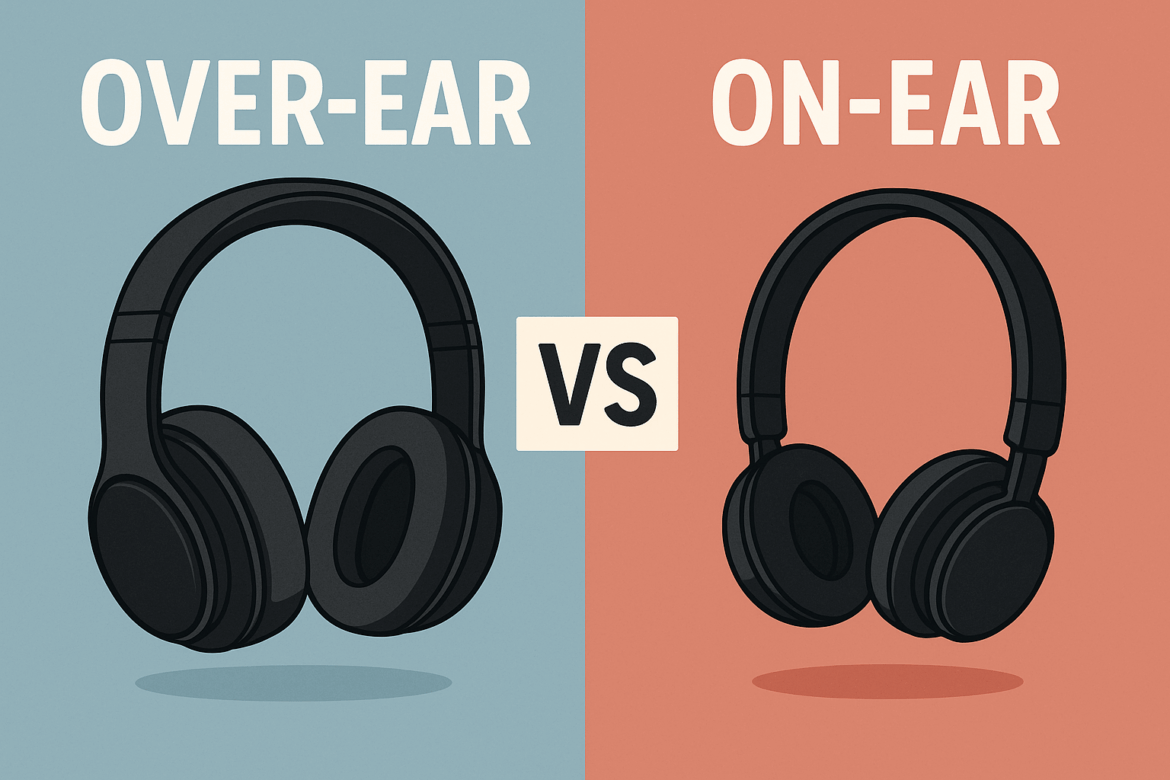What is the Difference Between Over-Ear and On-Ear Headphones?
In today’s world, where audio experiences are as personal as fingerprints, choosing the right pair of headphones is crucial. Whether you’re an audiophile, a casual listener, or someone who spends hours on conference calls, understanding the nuances between over-ear and on-ear headphones can greatly enhance your listening experience. Let’s embark on a journey to explore these two popular types of headphones, each with its distinct features and benefits.
Understanding Headphone Design: Over-Ear vs. On-Ear
Over-Ear Headphones: The Cocoon of Sound
Over-ear headphones, also known as circumaural headphones, are designed to fully envelop your ears. This design creates a seal that can offer exceptional sound isolation. Imagine being wrapped in a warm audio cocoon, where the world outside dissolves, leaving only you and your music in an intimate dance.
Features of Over-Ear Headphones:
-
Sound Quality and Isolation: The larger ear cups of over-ear headphones allow for bigger drivers, which often result in better sound quality, particularly in the bass frequencies. The encompassing design also provides superior passive noise isolation, making them ideal for immersive listening experiences.
-
Comfort for Long Sessions: With plush padding and adjustable headbands, over-ear headphones are generally more comfortable for prolonged use. They distribute pressure more evenly around the ears, reducing the chance of fatigue during extended listening sessions.
-
Versatile Usage: Over-ear headphones are perfect for a variety of environments—be it a bustling cafe or a quiet home office. They provide a more consistent audio experience across different settings.
-
Portability: While typically larger and less portable than their on-ear counterparts, many over-ear models now feature foldable designs and carrying cases to enhance mobility.
On-Ear Headphones: The Balance of Portability and Performance
On-ear headphones, also known as supra-aural headphones, rest directly on the ears and are generally more compact and lightweight. Picture a pair of headphones that strike a balance between the immersive experience of over-ear models and the convenience of earbuds.
Features of On-Ear Headphones:
-
Compact Design: On-ear headphones are smaller and lighter, making them easier to carry around. They are often the choice of urban commuters and travelers who need a portable audio solution that doesn’t compromise too much on sound quality.
-
Sound Leakage: Due to their design, on-ear headphones allow more ambient sound to enter and more audio to leak out. This can be a double-edged sword—while it keeps you aware of your surroundings, it can also be distracting in noisy environments.
-
Comfort and Fit: The comfort of on-ear headphones varies greatly depending on the ear pad material and clamping force. Some may find the pressure on the ears uncomfortable over long periods, while others appreciate the lighter touch compared to over-ear models.
-
Style and Aesthetics: On-ear headphones often come in stylish designs and vibrant colors, appealing to fashion-conscious users who want their headphones to make a statement.
Comparing Over-Ear and On-Ear Headphones
To further clarify the differences, here is a comparison table that outlines key aspects of both headphone types:
| Feature | Over-Ear Headphones | On-Ear Headphones |
|---|---|---|
| Sound Quality | Superior bass and sound isolation | Good sound, more ambient noise |
| Comfort | Better for long listening sessions | Varies, potentially less comfortable over time |
| Portability | Larger, less portable | Compact, travel-friendly |
| Noise Isolation | Excellent passive noise isolation | Less effective, more sound leakage |
| Style Options | Generally more subdued | Often more stylish and colorful |
Choosing the Right Headphones for Your Needs
Assessing Your Listening Habits
When deciding between over-ear and on-ear headphones, consider how and where you plan to use them. If you prioritize sound quality and comfort for extended use, over-ear headphones may be your best bet. They’re perfect for home use, studio work, or any situation where sound immersion is key.
On the other hand, if your lifestyle demands portability and you often find yourself on the move, on-ear headphones offer a more compact solution. They’re ideal for office commutes, gym sessions, and casual listening in social environments.
Considering Health and Safety
It’s important to note that listening to music at high volumes over long periods, regardless of headphone type, can cause hearing damage. Over-ear headphones tend to offer better sound quality at lower volumes due to their superior noise isolation, potentially reducing the risk of hearing loss.
Budget and Brand Considerations
Budget is a crucial factor in the decision-making process. While over-ear headphones generally cost more due to their larger size and better sound quality, there are many affordable on-ear options that provide excellent performance for their price.
When selecting a brand, consider factors such as warranty, customer support, and build quality. Brands like Bose, Sony, and Sennheiser are renowned for their over-ear models, while Beats and JBL offer trendy on-ear options.
Conclusion: Crafting Your Personal Audio Experience
Whether you choose over-ear or on-ear headphones, remember that the ultimate goal is to enhance your audio experience. Each type offers unique benefits that cater to different needs and preferences. By understanding the distinctions and considering your personal requirements, you can make an informed decision that will elevate your audio journey.
As you venture into the world of sound, let your headphones be more than just a tool—let them be your gateway to a universe of music, podcasts, and calls, where clarity and comfort reign supreme. The choice is yours, and with it, the power to shape your auditory world.
In the end, the difference between over-ear and on-ear headphones is not just about design or features; it’s about finding the perfect harmony that resonates with your lifestyle and personal taste. May your audio adventures be as rich and rewarding as the sounds you love.
Last Updated on August 27, 2025
